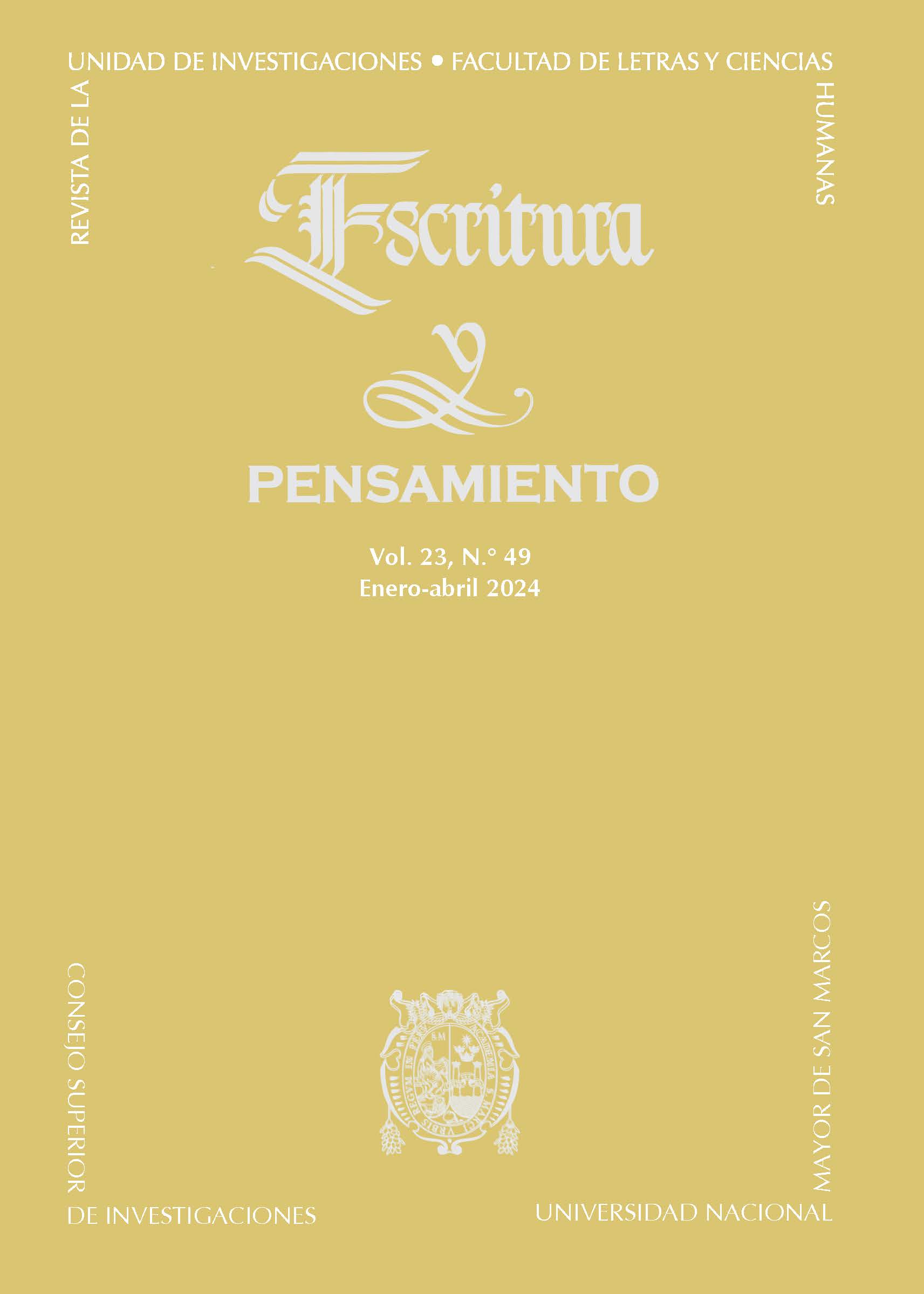Diversidad y diferencias: las ideologías lingüísticas como agente activo en la construcción de identidades
DOI:
https://doi.org/10.15381/escrypensam.v23i49.26709Palabras clave:
ideologías, identidades, constructo, lenguaje, razaResumen
La noción de ideologías lingüísticas responde a un constructo que favorece los intereses políticos y económicos de los grupos de poder utilizado para estructurar y ordenar la sociedad. En Lima esta se ha estructurado siguiendo los cánones que benefician solo a un sector de la población y que, a su vez, ayudan a la construcción de identidades que reflejan las brechas existentes en nuestro país. Por ello, se desea cristalizar estos extremos identitarios utilizando los procesos semióticos (Gal e Irvin, 1995) con data recabada de las redes sociales con mayor alcance que, por un lado, muestra un discurso de inclusión, lo que deja en claro que no comparten estigmas asociados a la etnicidad de los sujetos y, por otro lado, se clarifica el racismo que aún mantiene nuestra sociedad envuelta de aires academicistas.
Referencias
Bucholtz, M. & Hall, K. (2005). Identity and interaction: A sociocultural linguistic approach. Discourse Studies, 7 (4-5), 585- 614.
Chafe, W. L. (1982). Integration and Involvement in Speaking, Writing, and Oral Literature. In D. Tannen (Ed.). Spoken and Written Language:Exploring Orality and Literacy. Norwood, New Jersey: Ablex.
Duranti, A. (2003). Language as Culture in U.S. Anthropology; Three Paradigms. Current Anthropology, 44 (3), 323-347.
Flores, N. & Rosa, J. (2015). Undoing appropriateness: Raciolinguistic ideologies and language diversity in Education. Harvard Educational Review, 85 (2), 149-171.
Gal, S. & Irvin, J. (1995). The Boundaries of Languages and Disciplines: How Ideologies Construct Difference. Social Research, 62(4), 967-1001.
Gee, J. (1999). An introduction to discourse analysis: Theory and method. New York & London: Routledge.
Gee, J. (2015). Discourse, Small-D, Big D. K. Tracy, Cornelia Ilie & Todd Sandel (Eds.). The International Encyclopedia of Language and Social Interaction. USA: John Wiley & Sons.
Heller, M. & Martin-Jones, M. (2001). Introduction: Symbolic domination, education and linguistic difference. In M. Heller & M. Martin-Jones (Eds.). Voices of Authority. Education and linguistic differences. USA: Ablex Publishing.
Kroskrity, P. (2004). Language ideologies. In A. Duranti (Ed.). A Companion to Linguistic Anthropology. New Jersey: Blackwell Publishing Ltd.
Morales et al. (2005). Regionalización y descentralización. Lima: Fondo Editorial del Colegio de Economistas de Lima.
Ong, W. (1987). Algunas de las psicodinámicas de la oralidad. La palabra articulada como poder y acción. En W. Ong. Oralidad y escritura. Tecnologías de la palabra. México: Fondo de Cultura Económica.
Ong, W. (1987). La escritura reestructura la conciencia: el nuevo mundo del discurso autónomo. En W. Ong. Oralidad y escritura. Tecnologías de la palabra. México: Fondo de Cultura Económica.
Tannen, D. (1982). The Oral/Literate Continuum in Discourse. In D. Tannen (Eds.). Spoken and Written Language: Exploring Orality and Literacy. New Jersey & Norwood: Ablex Publishing.
Zavala, V. & Almeida, C. (2022). “Motoso y terruco”: ideologías lingüísticas y racialización en la política peruana. Lexis, XLVI (2), 481-521.
Zavala, V. & Córdova, G. (2010). El motoseo y la racialización del estudiante bilingüe. En V. Zavala & G. Córdova (Eds.). Decir y callar: Lenguaje, equidad y poder en la universidad peruana. Lima: Fondo Editorial de la Pontificia Universidad Católica del Perú.
Publicado
Número
Sección
Licencia
Derechos de autor 2024 Faustina Cáceres de la Cruz

Esta obra está bajo una licencia internacional Creative Commons Atribución 4.0.
Los autores retienen sus derechos:
a. Los autores retienen sus derechos de marca y patente, y tambien sobre cualquier proceso o procedimiento descrito en el artículo.
b. Los autores retienen el derecho de compartir, copiar, distribuir, ejecutar y comunicar públicamente el articulo publicado en la revista Escritura y Pensamiento (por ejemplo, colocarlo en un repositorio institucional o publicarlo en un libro), con un reconocimiento de su publicación inicial en la revista Escritura y Pensamiento.
c. Los autores retienen el derecho a hacer una posterior publicación de su trabajo, de utilizar el artículo o cualquier parte de aquel (por ejemplo: una compilación de sus trabajos, notas para conferencias, tesis, o para un libro), siempre que indiquen la fuente de publicación (autores del trabajo, revista, volumen, numero y fecha).





